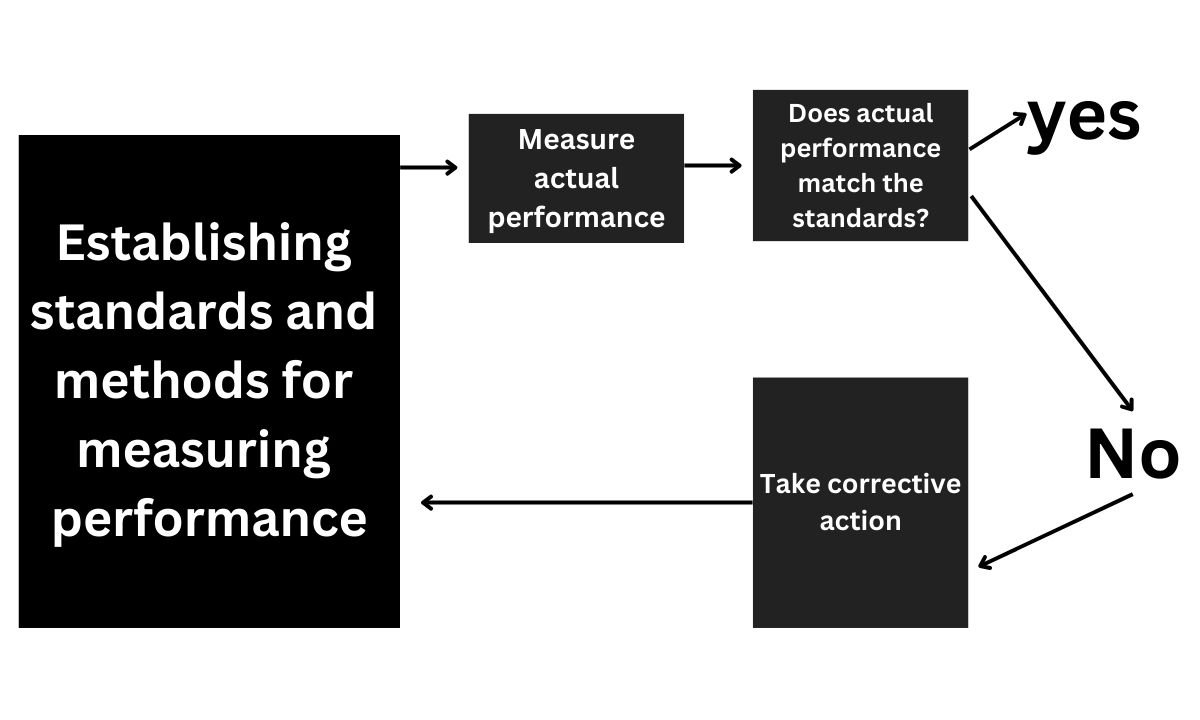Definition of Controlling – This book covers the entire syllabus of “Leadership & Management” prescribed by the BNMC for Diploma in Nursing Science & Midwifery Students.
We tried to accommodate latest information and topics. This book is an examination setup according to the teachers’ lectures and examination questions. At the end of the book previous university questions are given. We hope in touch with the pook students’ knowledge will be upgraded and flourished. The unique way of presentation may make your reading of the book a pleasurable experience.

Definition of Controlling
Controlling can be defined as the regulation of activities in accordance with the requirements of plans.
Or,
According to Harold Koontz,
Controlling is the measurement and correction of performance in order to make sure that enterprise objectives and the plans devised to attain them are accomplished.
Or,
Controlling is one of the administrative functions similar to planning, organizing, staffing and directing. It is an important function because it helps to check the errors and to take the corrective actions.
(Ref by- BT Basavanthappa/Nursing Administration/3/613)

Definition of control:
Controlling involves measuring and correcting the activities of subordinates to assure that events conform to plans.
According to Henri Fayol,
Control of an undertaking consists of seeing that everything is being carried out in accordance with the plan, which has been adopted, the orders, which have been given, and the principles, which have been laid down. Its object is to point out mistakes in order that they may be rectified and prevented from recurring.
According to EFL Breach,
Control is checking current performance against pre-determined standards contained in the plans, with a view to ensure adequate progress and satisfactory performance.
(Ref by- I. Clement/Management of Nursing services and Education/24/114)
Steps of Control
The control function, whether it is applied to cash, medical care, employee morale or anything else, involves four steps:
- Establishment of standards.
- Measuring performance.
- Comparing the actual results with standards.
- Correcting deviations from standards.

(Ref by- BT Basavanthappa/Nursing Administration/3/614)
Process of Controlling
Controlling as an administrative function involves following steps:
1. Establishing performance standard
2. Measuring of actual performance
3. Comparing actual performance with standards.
4. Taking remedial actions
1. Establishing performance standard: Standards are simply criteria of performance. Standards are the plans or the targets which have to be achieved in the course of business function. Controlling becomes easy through establishment of these standards because controlling is exercised on the basis of these standards. Standards are usually two types-
a. Measurable or tangible
b. Non-measurable or intangible.
2. Measurement of actual performance: the second major step in controlling is to measure the actual performance. Finding out deviations becomes easy through measuring the actual performance. Measurement of tangible standard is easy as it can be expressed in units, cost, money terms etc.
Quantitative measurement becomes difficult when performance of manager has to be measured. Performance of manager cannot be measured in quantities. It can be measured only by- (a) attitude of the workers, (b) their morale to work, (c) the development in the attitude regarding the physical environment and (d) their communication with the superiors.
3. Comparing actual performance with the standards performance: Comparison of actual performance with the planed targets is very important. Deviation can be defined as the gap extent of deviation of course of deviation. Extent of deviation means that the manager has to find out whether the deviation is positive or negative or whether the actual performance is in conformity with the planned performance.
4. Taking remedial actions: ones the causes and extent of deviations are known, the manager has to detect those errors and take remedial measures for it. There are two alternative here-
a. Taking corrective measures for deviations which have occurred and
After taking the corrective measures, if the actual performance is not in conformity with plans, the manager can revise the targets.
Importance of Controlling
1. Controlling is the vital function of the administration.
2. It ensures that actions are proceeding according to plan.
3. It serves as standard for allocating resources and evaluating performance.
4. It provides order and discipline in the organization.
5. It simplifies supervision by pointing out only important deviation.
6. It provides guide to future plan.
7. It acts as a tool for achieving organizational activities.
(Another Answer) of Importance of Controlling
A. Facilitates decision making: The process of control involves correct action to bring actual performance and standards together. Corrective measures involve right decision as to what and how deviation can be rectified.
B. Facilitates decentralization: Executives wish to decentralized and delegate authority when there is an efficient system of control.
C. Stimulates action: Control provide the basis for further action by spotting and correcting mistakes. Prevent recurrence of mistakes.
D. Enhance employee moral: A good control system is vital to the motivation and moral of employee. Workers do not like a situation that is out of control for it means that they cannot predict what will happen them.
E. Promotes efficiency of operation: control contributes to organization efficiency by focusing on the achievement of objectives.
F. Promote coordination: control promotes coordination between different units of the organization by providing them unity of direction.
G. Psychological process: The existence of a control system has a positive impact on the behavior of employees
(Ref by- I. Clement/Management of Nursing services and Education/24/118)
Read more:
